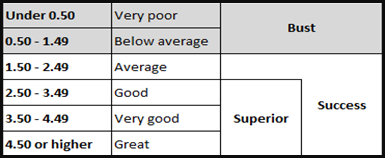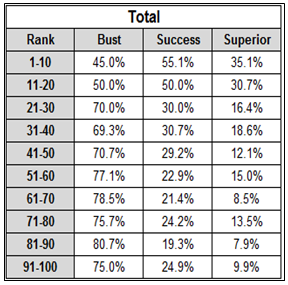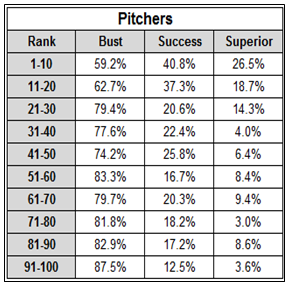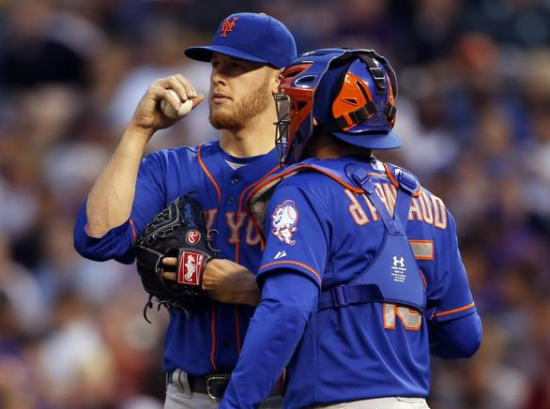
An MMO Fan Shot by Ryan Flanagan
The New York Mets are a team clearly building through the farm in their quest for success. They are a team forming a foundation of prospects to serve as the sole future of the team, in-lieu of spending big on big-ticket Free Agents in the offseason. So much is difficult to argue as the Mets payroll sits below $90 million for the first time in 14 years, when they spent $82.2 million in 2000 (Though it would actually be 113.2 million with 2014 inflation adjustments). That number is currently good for 22nd in baseball, looking up at teams like the San Diego Padres, Kansas City Royals, Colorado Rockies and Milwaukee Brewers. This, while playing in the largest market in the nation with the most expansive buying power.
Met ownership has been force-feeding the future success of unknown prospects down Met fans’ throats in attempts to blind them from the present. The team hasn’t made the playoffs in the past seven seasons. In fact, the Mets are tied with the Padres with the 6th longest playoff drought in the MLB with that figure. The team hasn’t had a winning record in 5 seasons. Even worse, the Mets have had only 7 playoff appearances and have won only 4 pennants in their 52 year existence. That’s a success rate of 13.46% and 7.69%, respectively.
With the team’s inability and/or refusal to field a respectable payroll in 2014, they are relying almost entirely on the success of players acquired for letting big names and fan favorites walk out the door. The names of Syndergaard, Montero, Wheeler, Nimmo, Smith and d´Arnaud are some of the saviors that are promised to make this team a perennial contender. The strategy begs the question of what the odds are that these prospects will indeed pan out. Fortunately, Scott McKinney has done the legwork. Though slightly dated, the numbers in majority still hold true. If anything, pitching success rates have gone down with the prevalence of injury.
In an effort to calculate the success rates of prospects, Scott used a sample size of Baseball America’s top 100 prospect lists from 1990 to 2003, stopping in ’03 because the prospects had mostly exhausted their cost-controlled years. Any prospect with fewer than 100 plate appearances and 25 innings was omitted from the study. In order to determine the “success” and “failure” of the prospect, he used the following standards:

Using WAR as the measuring stick, Scott developed metrics into Bust, Superior and Success categories. His definition of success can certainly be argued, but his justification was that a player would have to be at least average in the MLB to be considered a “success.” I tend to agree. Below are graphs of the findings:

The graph above shows the breakdown of both position players and pitchers, total, averaged over the 13-year study period. The “Rank” column signifies the prospect’s rank out of the top 100. Top-ten prospects had just over a 50% “Success” rate, i.e. 45% of Top 10 prospects had a WAR under 1.49. As the prospect ranks get higher, the results not shockingly deteriorate.

The next graph shows only pitching prospects in Baseball America’s Top 100 from 1990-2003. Looking at the numbers, top 10 pitching prospects have a “bust” percentage of 59.2%, meaning nearly six out of every ten Top 10 pitching prospects ended up with a WAR of less-than 1.49, i.e. ,can be considered failures. Like the total, the results get worse as the ranks increase.

The final graph shows the success rates of position players in the top 100. The best position players show more promise than best pitchers, yielding a success rate of nearly 63%. That number falls dramatically however as the prospects rank increases, in-line with the total findings.
So what does this all mean? Our biggest prospects in Baseball America’s Top 100 list include Noah Syndergaard (16), Travis d’Arnaud (38), Rafael Montero (68) and Dominic Smith (92).
Looking at the Total Findings graph solely, Syndergaard would have 50/50 odds of being successful in the league, TDA about a 31% chance, Montero a 22% chance and Dom Smith about a 25% chance. If you look at the position-specific graphs, Syndergaard would have success odds of 41%, TDA 36%, Montero 21% and Smith 33%.
Obviously, it’s far-fetched to put a literal percentage on a player’s value as a guarantee, but it groups them into the trends developed by similar prospects before them. Also, you can assume Smith’s ranking will likely be drastically higher when he’s close to coming to the big leagues, as he’s still years away.
I’m certainly not saying that these odds are correct and that we should absolutely expect the above to happen. I’m not saying TDA has a literal 31% chance of finding success in the MLB, I’m saying, according to this study and its definition of success, similar-ranked prospects have had a 31% success rate of fulfilling their expectations.
The study shows that when you average 13 seasons of prospects, the trends overwhelmingly highlight the reality that prospects fail much more than they succeed. That’s just the reality. Look no further than the Mets’ own recent history. I’m sure we all remember Aaron Heilman, the man who’s responsible for Molina’s Game 7 winning HR in the 2006 NLCS that started the “beginning of the end.” Well, Mr. Heilman was coveted at one time as the Mets second best prospect and Baseball America’s 45th best in its list of 100. How about Mike Pelfrey? He was ranked 20th in Baseball American’s Top 100, only four worse than Syndergaard’s current rank. I wouldn’t say Mike exactly lived up to the expectations. I won’t bother with Generation K.
I truly hope Noah, Travis, Rafael, Dominic and all Met prospects become great players for this team, I just refuse to buy into the notion that they will all be great. Time will tell, but the odds are certainly stacked against them all panning out. Realistically, if only half the prospects worked out, it would be seen as above the average. The Mets need to start spending and do so wisely – relying too heavily on the farm is relying too heavily on unknowns. We are completely investing in an unknown, unproven future.
* * * * * * * *
This Fan Shot was contributed by Ryan Flanagan. Have something you want to say about the Mets? Share your opinions with over 30,000 Mets fans who read this site daily. Send your Fan Shot to [email protected]. Or ask us about becoming a regular contributor.
















